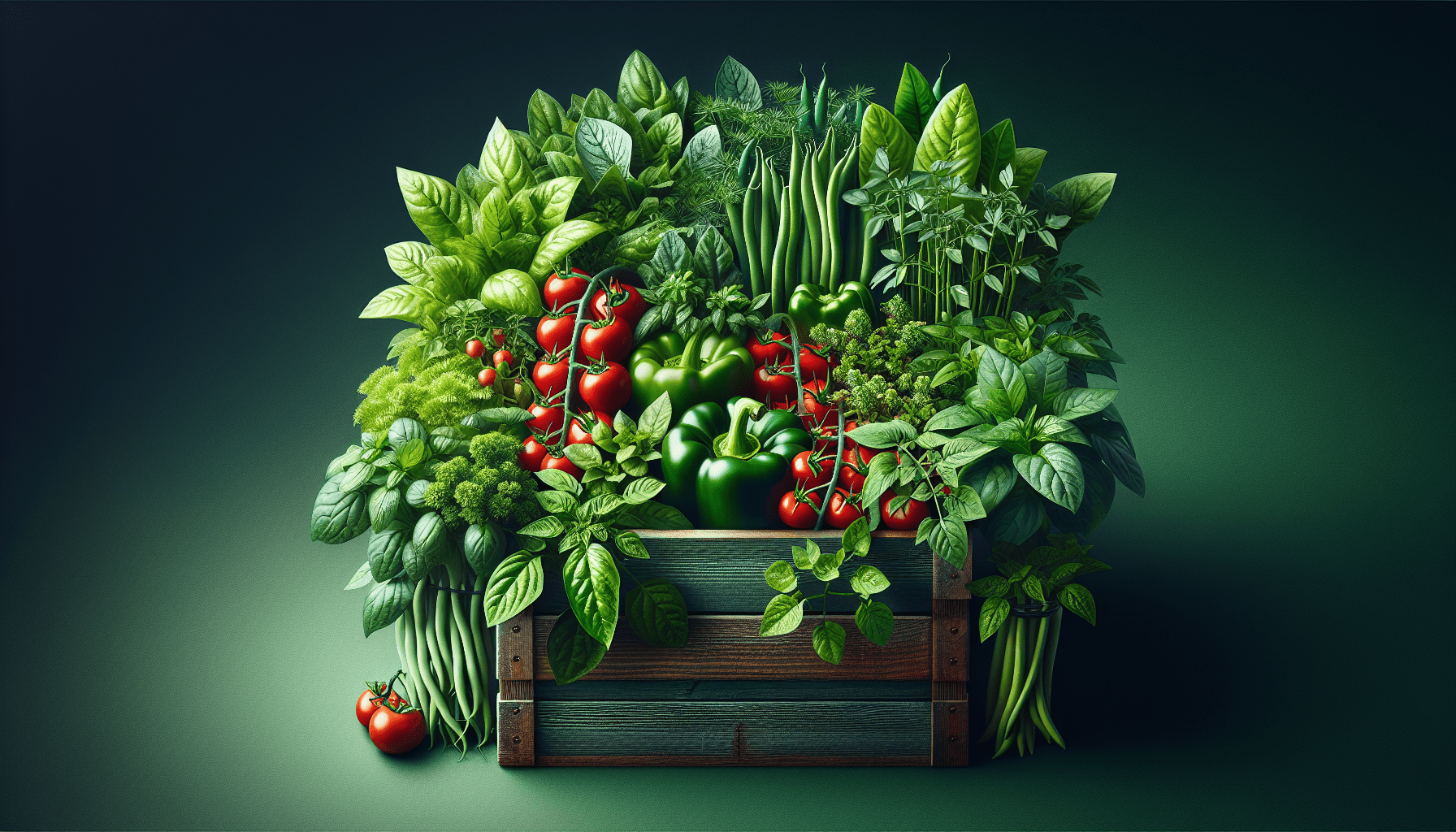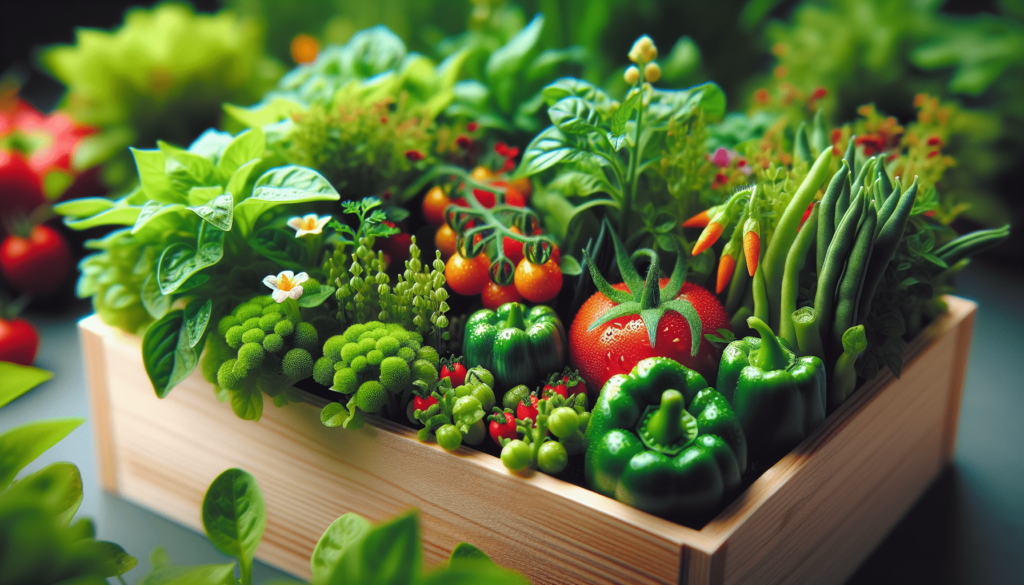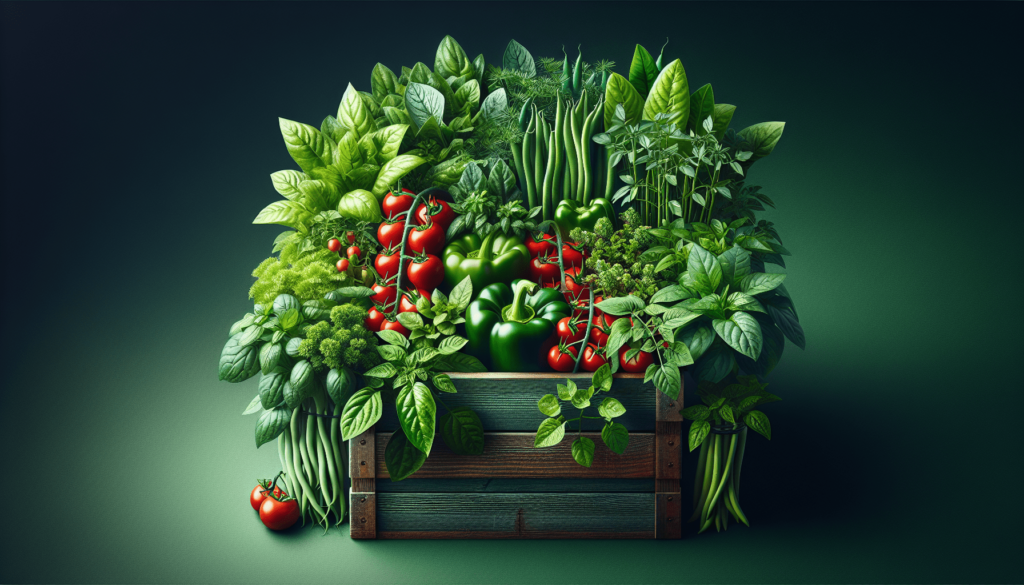
Welcome to our guide on discovering the best vegetables to grow in a small garden! We all know that space can be a limitation, but it certainly doesn’t have to be a deal-breaker. Together, we’ll explore some wonderful vegetable options that thrive in smaller spaces, from nutrient-packed leafy greens to succulent root veggies. Let’s dive into this exciting adventure of urban gardening and uncover ways to maximize our green oasis, cultivating fresh produce that brings delight to our plates and nourishment to our lives!
What Are the Best Vegetables to Grow in a Small Garden?
Have you ever wondered what the best vegetables are to grow in a small garden? Many of us find ourselves with limited space but an eager desire to cultivate our own fresh produce. We’re here to help guide you through the best options for making the most of your small garden space.

Understanding Your Space
Before we dive into the best vegetables for small gardens, it’s essential first to understand what space we’re working with. It may be a small backyard, a balcony, or even windowsill containers. Taking a moment to gauge the amount of sunlight your garden gets, the soil quality, and the available growing area will help us make informed decisions about what to plant.
Assessing Sunlight Exposure
Most vegetables require a minimum of six hours of direct sunlight daily to thrive. Let’s check the different spots in our garden and see where the sun hits longest. Having an awareness of sunlight exposure will greatly impact our vegetable choices.
Soil Quality and Preparation
Healthy soil is crucial for growing strong plants. We’re going to need to evaluate the soil quality by observing its texture, drainage, and nutrient content. Adding compost or organic matter can vastly improve the soil, creating a fertile environment for our vegetables.
Maximizing Growing Area
Even within a small space, we can employ various techniques to maximize our growing area. Raised beds and vertical gardening are excellent strategies. We’ll discuss how to implement these approaches to increase our planting capacity.
Best Vegetables for Tiny Gardens
Now that we have a good understanding of our space, let’s dive into the juicy details: which vegetables are the best to grow in a small garden? We’ll cover a variety of options, ensuring something suits everyone’s taste and available space.
Leafy Greens
Leafy greens are some of the easiest and most rewarding vegetables to grow in a small garden. They thrive in partial shade and require little space.
Lettuce
Lettuce is an excellent choice, with many varieties such as Romaine, Butterhead, and leaf lettuce to suit our preferences. By harvesting outer leaves, we can enjoy a continuous supply throughout the growing season.
Spinach
Spinach is another small-space superstar. It’s quick to mature and can be grown in containers or garden beds. Plus, it thrives in cooler weather, extending our growing season.
Kale
Kale, a nutritional powerhouse, grows well in small gardens. It’s hardy and can yield a significant amount of produce from minimal space.
| Leafy Green | Light Requirements | Growing Tips |
|---|---|---|
| Lettuce | Partial to full sun | Succession plant every few weeks for continuous harvest |
| Spinach | Partial to full sun | Grow in cooler months for best results |
| Kale | Full sun to part shade | Harvest individual leaves from the bottom up |
Root Vegetables
Root vegetables might seem like they need lots of space, but many are perfect for small gardens, especially when grown in containers.
Carrots
Carrots are a great addition to a small garden. They prefer deep, loose soil, making containers an ideal growing method. We can choose shorter varieties like ‘Thumbelina’ or ‘Nantes’ to make the most of our space.
Radishes
Radishes are quick-growing and beginner-friendly. They mature in just about a month, allowing multiple harvests throughout the growing season.
Beets
Beets can do double duty, providing delicious roots and nutritious greens. Like carrots, they thrive in deep containers.
| Root Vegetable | Container Depth | Growing Tips |
|---|---|---|
| Carrots | At least 12 inches | Thin seedlings to avoid overcrowding |
| Radishes | 6-8 inches | Sow seeds in succession for continuous harvests |
| Beets | 12-14 inches | Harvest greens to promote root growth |
Climbers and Vines
Climbing plants are excellent for small spaces because we can train them vertically, conserving ground area.
Tomatoes
Tomatoes, especially indeterminate varieties, are perfect for vertical gardening. We can use stakes, cages, or trellises to support their growth. Cherry tomatoes are particularly well-suited for small gardens.
Peas
Peas are an early-season favorite. They love to climb and can be trained up trellises or supports. Plus, they’re a nitrogen-fixing plant, which improves soil quality.
Cucumbers
By choosing vining cucumber varieties, we can grow them vertically on trellises. This method not only saves space but keeps the fruits clean and easier to harvest.
| Climber/Vine | Support Needed | Growing Tips |
|---|---|---|
| Tomatoes | Stakes, cages | Regular pruning enhances airflow and fruit production |
| Peas | Trellises | Sow seeds early in spring for best results |
| Cucumbers | Trellises | Harvest regularly to promote continuous fruiting |
Compact Bush Varieties
Bush varieties of certain vegetables are ideal for small spaces because they don’t sprawl like their vining counterparts.
Beans
Bush beans are compact and prolific. They require less support and can be grown in small garden beds or containers.
Peppers
Both bell and hot peppers have compact growth habits, making them perfect for small gardens. They prefer warm weather and can be highly productive.
Zucchini
While traditional zucchini plants can take up significant space, bush varieties are much more manageable and still produce an abundance of fruits.
| Bush Variety | Growing Tips | Harvest Time |
|---|---|---|
| Beans | Plant in succession for extended harvest | 50-60 days from planting |
| Peppers | Support plants with small stakes if needed | 60-90 days from planting, depending on variety |
| Zucchini | Regularly harvest to encourage more fruits | 45-55 days from planting |
Growing Herbs in Small Spaces
Herbs are incredibly versatile and can add flavor to our dishes, not to mention they’re often more expensive to buy than to grow. They thrive in small spaces, containers, and even hanging gardens.
Basil
Basil is a popular herb for its rich flavor and aroma. It grows well in pots and can thrive alongside tomatoes. Regular harvesting encourages bushy growth.
Parsley
Parsley is an often over-looked, yet incredibly useful herb. It grows well in partial shade and isn’t too fussy about soil conditions.
Cilantro
Cilantro, loved for its distinct taste, can be a bit finicky in hot weather. It does well in cooler temperatures and partial shade.
| Herb | Light Requirements | Growing Tips |
|---|---|---|
| Basil | Full sun | Pinch off flower heads for extended leaf growth |
| Parsley | Partial to full sun | Water regularly, but don’t overwater |
| Cilantro | Partial shade | Succession plant to ensure continuous supply |
Advanced Gardening Techniques for Small Spaces
We can enhance our small garden’s productivity by employing advanced gardening techniques that maximize our space, improve yields, and even extend our growing season.
Succession Planting
Succession planting involves continuously sowing new seeds as old crops are harvested. This technique keeps our garden productive all season long. For instance, after harvesting early spring spinach, we can plant a quick-growing crop like radishes in the same space.
Intercropping
Intercropping allows us to grow vegetables with complementary growth habits together. For example, pairing shallow-rooted vegetables like lettuce with deeper-rooted plants like carrots ensures efficient use of soil nutrients and space.
Vertical Gardening
Vertical gardening includes using trellises, hanging baskets, and wall-mounted planters to make the most of our space. Climbing vegetables, herbs, and even small fruits can thrive in vertical systems.
Companion Planting
Companion planting takes advantage of certain plants’ natural relationships with each other to improve growth and deter pests. For example, planting marigolds with tomatoes can help reduce nematode populations in the soil.
Container Gardening
Container gardening is perfect for those of us with very limited space. Almost any vegetable can be grown in a container, provided it’s the right size. Containers should have good drainage, and it’s essential to keep the soil consistently moist but not waterlogged.

Tips for Successful Small Space Vegetable Gardening
To ensure our small garden flourishes, we’ll follow these essential tips:
Quality Over Quantity
Rather than trying to grow a large variety of vegetables, we should focus on a few we love and do well in small spaces. This approach ensures healthier plants and better yields.
Efficient Watering
Efficiently watering our garden is crucial, especially in confined spaces. We should use methods like drip irrigation or soaker hoses to conserve water and ensure it reaches the roots. Mulching can also help retain soil moisture.
Regular Maintenance
Regular maintenance, such as pruning, weeding, and monitoring for pests, keeps our garden healthy and productive. Small gardens are easier to maintain, allowing us to act quickly if issues arise.
Fertilization
Using organic fertilizers like compost or worm castings can provide a steady nutrient supply. Applying a balanced fertilizer during the growing season encourages lush growth and a bountiful harvest.
Plant Rotation
Even in small gardens, rotating crops each season can prevent soil depletion and reduce pests and diseases. We should follow crop rotation principles to keep our garden vibrant year after year.
Challenges and Solutions in Small Garden Vegetable Growing
Every gardening endeavor comes with potential challenges. Here, we’ll address some common issues and provide solutions to ensure a productive garden.
Limited Sunlight
If our small garden receives limited sunlight, we should select vegetables that tolerate partial shade. Additionally, we can use reflective surfaces to increase light exposure.
Soil Compaction
Soil in small spaces can become compact quickly. Regularly adding organic matter and using raised beds or containers can improve soil structure. Avoid walking on garden beds to reduce compaction.
Pests and Diseases
Small gardens can be more prone to pests and diseases due to the concentration of plants. We should practice good garden hygiene by removing dead plant material, encouraging beneficial insects, and using organic pest control methods when needed.
Space Constraints
Maximizing vertical space and choosing compact plant varieties are effective ways to address space constraints. Utilizing hanging baskets, wall planters, and trellises can significantly increase planting area.
Nutrient Depletion
Continuous growing in a small space can quickly deplete soil nutrients. Regularly refreshing the soil with compost or organic matter and applying organic fertilizers help maintain soil fertility.
Conclusion
Our small garden can be a bountiful source of fresh vegetables with thoughtful planning and execution. By understanding our space, selecting the right vegetables, and employing efficient growing techniques, we can enjoy a productive and satisfying gardening experience.
So, let’s roll up our sleeves and transform our small garden into a thriving vegetable paradise. Happy gardening!





